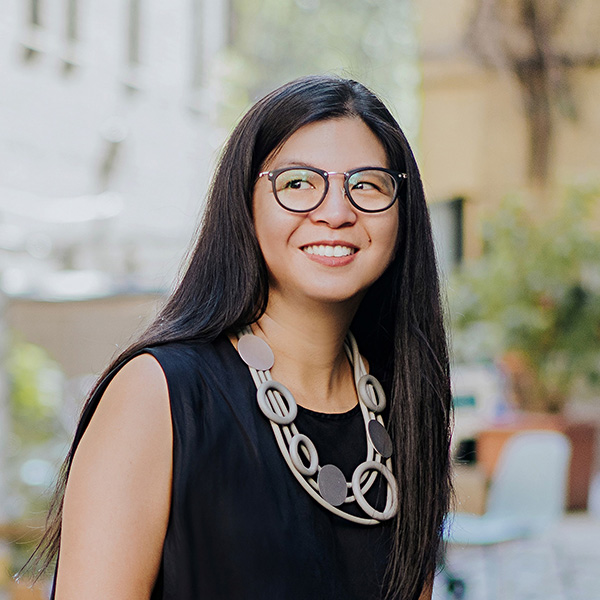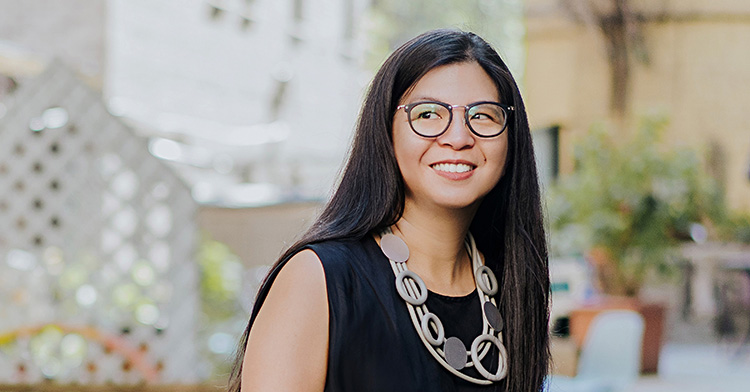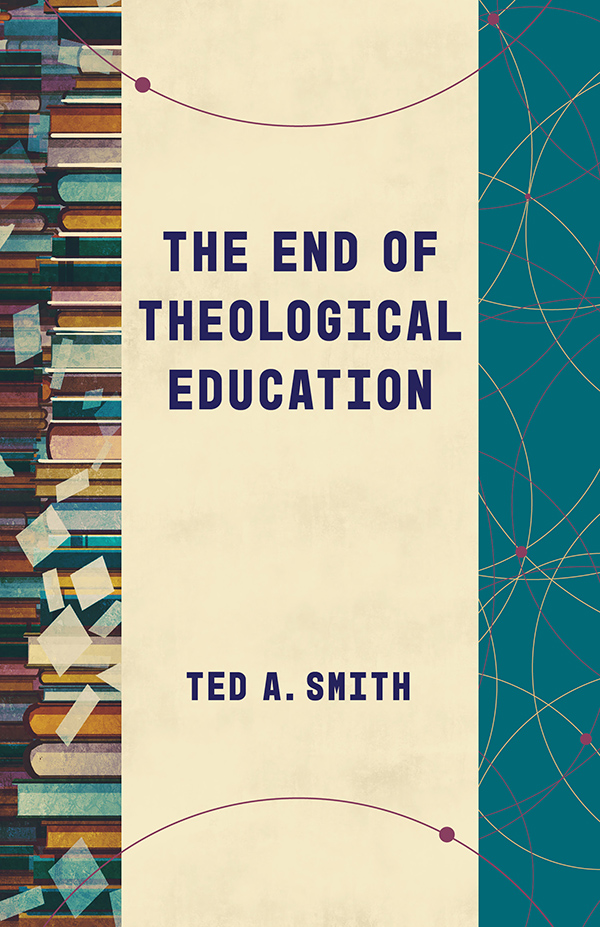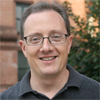One afternoon in early spring, students from Louisville Presbyterian Theological Seminary gather in the offices of Kentucky Refugee Ministries.
Their professor, Christine Hong, addresses the group, which includes former refugees: Christians from Cuba, Congo and Rwanda; a Muslim woman from Somalia; a Nepali Hindu man from Bhutan.
The seminarians are taking a course called “Multifaith Perspectives on Global Displacement,” a pilot project made possible by an innovative collaboration between the Presbyterian Mission Agency and Louisville Presbyterian Theological Seminary.
Hong begins by asking, “How does your religious practice challenge and sustain you?”
The discussion continues for nearly three hours, until everyone with a story to tell or a question to ask has had a chance to speak.
A woman from Congo tells about living in a refugee camp in South Africa. She says she is grateful to have transitioned “from living outside to living in a house.” A man from Cuba recalls his excitement about “coming to the land where you get money from the trees.”
A KRM staff member suggests that students can help by mentoring, serving on a welcome team, tutoring and spreading the word. “Be our feet on the ground,” she says.
This course is “getting students off campus and into the community to discover resources,” said Sue Garrett, the dean of LPTS. “We should always be building partnerships with nonprofits. This course is raising our students’ sights to the possibility of doing that.”
A collaborative model
Equipping effective church leaders on the ground is one of the main goals of the course, which was the result of creative thinking, proximity -- the mission agency and the seminary are only two freeway exits apart -- and a shared desire to connect the interfaith work of congregations and the national church.
Leaders of both organizations believe that the endeavor will help equip future pastors and church leaders to think theologically, navigate diversity, connect with their communities and employ technology -- all essential skills for effective ministry in today’s world.
What collaborations would enrich your organization and help you engage with young people, more diverse constituents or other communities?
The potential of this collaborative model interests Barbara Wheeler, former president of Auburn Theological Seminary, who has directed recent studies of seminary students and seminary governance.
Congregations and regional bodies have been working closely with seminaries for years, Wheeler said, but she is not aware of many parallels at the national denominational level.
“Where there is long-term and widespread collaboration between church and academy is at the regional and local-church levels,” Wheeler said.
Bridging the disconnects
Born in Los Angeles and raised in Seattle, Hong earned degrees in divinity and theology from Princeton Theological Seminary and did her doctoral work at California’s Claremont School of Theology.
At Claremont, she took a leadership role in interfaith efforts, organizing a national conference that brought together key North American Muslim scholars and practitioners to share approaches to peace building and conflict resolution.
Hong was hired by the Presbyterian Mission Agency in early 2013 to lead the agency’s work in interfaith relations. One of six agencies at the national level of the PCUSA, PMA coordinates the total mission program of the denomination.
When Hong began working for PMA, she was excited about the opportunity to educate congregations and help them connect with people of other faiths, she said. But she soon discovered a kind of “disconnect” between congregations and the national church.
On one hand, the PCUSA was encouraging multifaith dialogue and producing resources to educate people about interfaith relationships. On the other hand, church members were reaching out to people of other faiths in their communities. But Hong found little evidence of partnership in these efforts.
“There wasn’t a trickle-down or trickle-up,” she said. “There seemed to be this real gap between what is going on at the local and national levels.”
Can you identify creative ways to bridge the gaps that you encounter in your work?
Reaching seminary students -- the future leaders of congregations -- seemed like a good place to start. It had the added bonus of engaging more young adults, many of whom had grown up in a diverse society that was not reflected in the more homogenous environment of their faith traditions.
“I thought if we could talk to seminarians and connect them to national resources around multifaith engagement early on, they would be more inclined to use those resources and to partner with us,” she said.
Working with Rob Fohr, whose job as “mission catalyst” for PMA includes building connections with young adults, Hong began to develop a seminary course to address these issues.
“Christine was particularly interested in engaging young adults,” said Charles Wiley, the associate director of theology, worship and education for PMA. “This had not been a strength of our interfaith work in the past.”
Connecting with the community
Students in the course are already thinking about how they will use the skills and resources gained from the class in ministry.
At 44, Jennifer Lewis is one of the older class members. A United Methodist, she left her job managing a chemical company because she felt called to be pastor of a congregation.
As an African-American growing up in southern Indiana, she saw the controversy stirred by a school desegregation plan that involved busing just across the Ohio River.
For her final course project, she wants to examine displacement as it relates to busing, as a way of educating today’s young people.
“I want to address the younger generation who have no memory of this,” she said.
Another student, 24-year-old John Ray Roberts, is motivated by the conviction that more widespread access to free online resources can make the world a better place.
“Education is a source of power, the power to make a change,” he said. “If people are empowered by a blog I write, they can be the ones who make the change.”
Roberts, who grew up Southern Baptist, is headed for military chaplaincy. He says his long-term goal is to apply the interfaith relations skills he is learning to the peaceful resolution of conflicts.
He and his wife, Elizabeth, are already drawing up plans for a new organization, Peace Louisville, which they hope will help bridge racial, cultural and religious differences.
Benefits for the seminary
The other collaborator in the project, Louisville Seminary, has benefited as well. Garrett said she was very interested when Hong contacted her more than a year ago with an idea for a new course. It meshed well with the seminary’s Doors to Dialogue (D2D) initiative, aimed at preparing pastoral leaders for ministry in a diverse world.
The seminary’s academic committee endorsed the proposal. The new course would study contemporary human displacement, migration and immigration through multifaith and intercultural lenses, with an emphasis on conflict, economics, politics and human development.
The goal was to deepen students’ understandings of the role of culture and religious communities in the lives of displaced people.
Fifteen students enrolled in the course, which unfolded over 12 weekly sessions, with topics ranging from religious violence to Christian activism on the U.S.-Mexico border.
Guest lecturers discussed displacement issues affecting Sikhs and Muslims, and PMA staff working for the Presbyterian Ministry at the United Nations led a session on the role of the U.N. in addressing global displacement.
Hong and her PMA colleagues view their contributions to the course as part of their PMA jobs and receive no salary from LPTS for teaching the global displacement course.
“We are able to utilize the expertise of someone from the denomination at no cost to us financially,” Garrett said. She sees this as a valuable model, “a denomination investing resources and time to benefit people going into ministry.”
Technology and communication
Another benefit for the seminary -- and for the church -- is that the course requires students to use technology to share what they are learning with a wider audience. In one class session, students used Skype to connect with PCUSA young adult volunteers.
Students are required to write weekly blogs incorporating readings and class discussions.
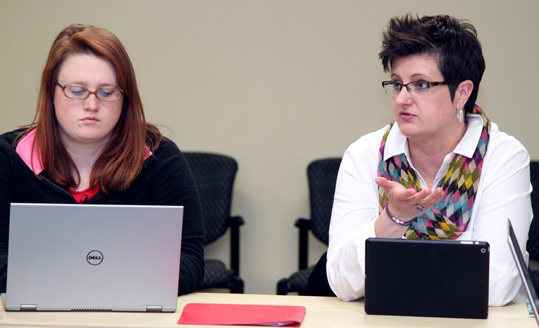
“We’re encouraging students to do public scholarship,” Hong said. “Blogging encourages students to reach out and engage with a variety of perspectives.”
The course also requires students to teach about an issue or share a story of global displacement through a final media project. They are to design the project for a specific community -- a church youth group or adult education class, for example. The students thus create teaching materials and resources for people in congregations.
Sara Otoum, a social media specialist for PMA, has been available throughout the course to help set up platforms for the blogs and media projects, and to help teach students how to use social media for social activism and public scholarship.
The course’s integration of technology and learning is a step forward for the seminary, Garrett said. “It’s something that’s needed to survive in ministry today.”
Reflection and action
The course content moves students seamlessly between the abstract and the concrete, Garrett said, linking theories about displacement with the realities of displaced people.
By linking reflection and action, she said, the course “models for students the benefit of theological thinking.” Students learn to place concrete realities (for example, a refugee who needs help resettling) within a theological context (the biblical call to welcome the stranger).
The concept of displacement is broadened to include both the physical dislocation of refugees, migrants and immigrants and the more metaphorical displacement and marginalization of people by things like race, religion and sexual orientation. Students are invited to connect with the topic as they examine their personal privilege and power in light of displacement narratives.
Hong shares with the class her perspective as a second-generation Korean American whose parents settled in the United States in the 1970s.
“People always assume that I’m foreign, that I don’t speak English,” she said. “Dealing with these assumptions takes a toll on your mental health.”
Learning about the different problems faced by first- and second-generation immigrants has been eye-opening for students such as Lewis, who hopes to do ministry in a multicultural setting.
“I can sense the pain of parents, that their traditions will be lost,” she said. “I’m hoping I’ll be more sensitive to that in future church leadership.”
Hong said she has been pleased to see “the amount of empathy being cultivated.” An unexpected challenge for her as a teacher, however, has been the need to push students not to narrow their understanding of the issue of displacement by constantly comparing it to their own experiences.
Looking toward the future
Hong’s course models an effective way to study an issue -- in this case, immigration -- that may be too controversial to talk about in a congregational setting, PMA associate director Wiley said.
“The academic context may be the best place to explore some issues,” he said, adding that the classroom offers freedom to raise questions that may not get voiced in congregations.
Wiley sees more collaboration on the horizon, as seminaries and denominations face similar challenges -- doing more with less and equipping leaders for Christian witness in a world of complex needs.
“Seminaries and the national church have an increasing sense that we can work together,” he said, “that our futures are bound together.”
Questions to consider
Questions to consider
- What collaborations would enrich your organization and help you engage with young people, more diverse constituents or other communities?
- Where are the gaps or disconnects with others in your field? How might you bridge that divide?
- What resources (people, money, time, knowledge, tradition) do you have to share? What resources do you need?
- Could you find partnerships to help connect you to “concrete realities” or to a wider ecology?
- How might you, like the students in the course, use media to share what you learn about collaboration with a wider audience?
- Which difficult issue facing your organization could be more easily explored in with a partner or partners?


